‘Peep Show is about consistently stubbing your toe against life’: The sitcom at 20 by its creators and stars
David Mitchell, Robert Webb, Sam Bain and more talk to Ellie Harrison about the cult hit’s ‘circus of anxiety’ and ‘massive rudeness’, plus all of those ‘Succession’ comparisons, and the most excruciating filming moments


The great thing about writing Peep Show,” says Sam Bain, co-creator of the cult Channel 4 sitcom, “is that you can put all your most humiliating, weird, embarrassing moments into a comedy, watched by thousands of people.” In fact, it was more – the show tended to pull in over a million – and it wasn’t unusual for Bain to insert his own surreal scrapes into the show. For example, “I did once sit on a burglar,” he admits, as he recalls the experience that ended up in the series five episode “Burgling”. “I also got stood up on a date, and then bumped into the girl who stood me up on the way home, which went into the same episode.”
Twenty years ago today, Peep Show premiered on late-night Channel 4, inviting viewers inside a beige Croydon flat with a sagging sofa and a mouldy bathroom sink. These bleak premises were the home of Mark Corrigan, played by David Mitchell (interests: the Battle of Stalingrad and chess), and Jeremy Usbourne, played by Robert Webb (interests: bongs and f*** buddies). Over nine series, their lads’ pad served as the setting for a show full of ludicrous predicaments, existential angst and unflinching insight into the male psyche, all against the backdrop of the Blair era and the financial crash.
Peep Show never achieved mighty viewing figures during its run, but it was always loved by critics and gradually grew into a cult classic. Ricky Gervais called it “the best show on television” in 2005. It made stars of its then pretty much unknown leads Mitchell and Webb. Its writers Sam Bain and Jesse Armstrong went on to make Fresh Meat and Four Lions together, before Armstrong brought the world a little show called Succession. Peep Show was also where a young Olivia Colman had her breakthrough role. And it introduced Matt King’s drug-loving rascal Super Hans into our living rooms, with all his scheming and squalor in tow.
Bain and Armstrong met Mitchell and Webb in the early 2000s, while on a writing team for an ill-fated BBC comedy about squatters that never got made. The four of them started hanging out while Mitchell and Webb were putting on two-man shows in rooms above pubs in Edinburgh. So the pair were at the forefront of Bain and Armstrong’s minds when they started developing an idea that would eventually turn into Peep Show. “It was our big break,” Mitchell tells me, explaining that he and Webb had made a TV sketch show before, called Bruiser, which “literally no one had noticed”. “This was a proper Channel 4 sitcom commission. From the start, we’d had a conversation with Sam and Jesse, saying that if it worked, if people liked it, we’d make lots of it. We wouldn’t stop after two or three series. Because once you’ve got a functioning sitcom premise, that’s gold dust.”
Jim Howick, who played Mark’s sickly JLB Credit colleague and love rival Gerard, joined Peep Show in season four. “It was one of those rare occasions where I was cast in my favourite show, which seldom happens,” he says. “I mean, it never happens, actually. Going to the flat for the first time, I felt like I was a kid in Harry Potter world. The set really remained the same, and had to, because there was no sense of evolution for the characters in their home life. Props became iconic, in a way. When I first went into Mark’s bedroom and saw his Churchill books, I got a real thrill out of that.”
Adding to Peep Show’s unique aesthetic was the point-of-view filming technique. Bain had watched Being Caprice, a documentary released in 2000 about the American lingerie model, where she had a camera attached to her sunglasses so viewers could see her life through her eyes. Bain had been particularly transfixed by a scene of her opening her fridge to find a sad pot of yoghurt inside. And so the format of Peep Show was born. In the sitcom’s nascent stages, the actors literally wore cycle helmets on their heads, with mini cameras attached to the front and their co-star looking straight down the lens. “The most Wild West moment,” recalls Webb, “was a scene where I was wearing the mini cam and I was basically driving around Croydon, doing my lines and filming David at the same time, trying not to crash.” Head-mounted cameras were soon replaced, with cameraman Nick Martin filming directly in front of the actors’ faces instead.
Angus Wright, who played another love rival of Mark’s called Angus (the part of a pretentious scholar of Byzantine history was written for him), tells me it was hard to adjust to looking down the lens. “Acting 101 on camera is ‘don’t look down the lens’,” he says, “and you teach yourself not to.” Catherine Shepherd, who starred as Angus’s wife April, agrees that it was “really odd”. “You have closer contact with the cameraman than you do with any of the other cast,” she says. “You’re sort of wrapped around the camera, kissing it. It’s innately quite a comical experience, it’s not like any other job.” Later, she tells me, “I have a massive problem with laughing on set anyway, and with Peep Show I remember having to really hurt myself not to laugh.”
The POV technique allowed for the show’s greatest comedy asset: internal monologues. These showed the viewer the often gaping chasm between what a character was saying and what they were thinking. “I’m just a normal functioning member of the human race and there’s no way anyone can prove otherwise,” is a classic line from inside Mark’s manic mind. “It added to this circus of anxiety that the show is,” says Howick.
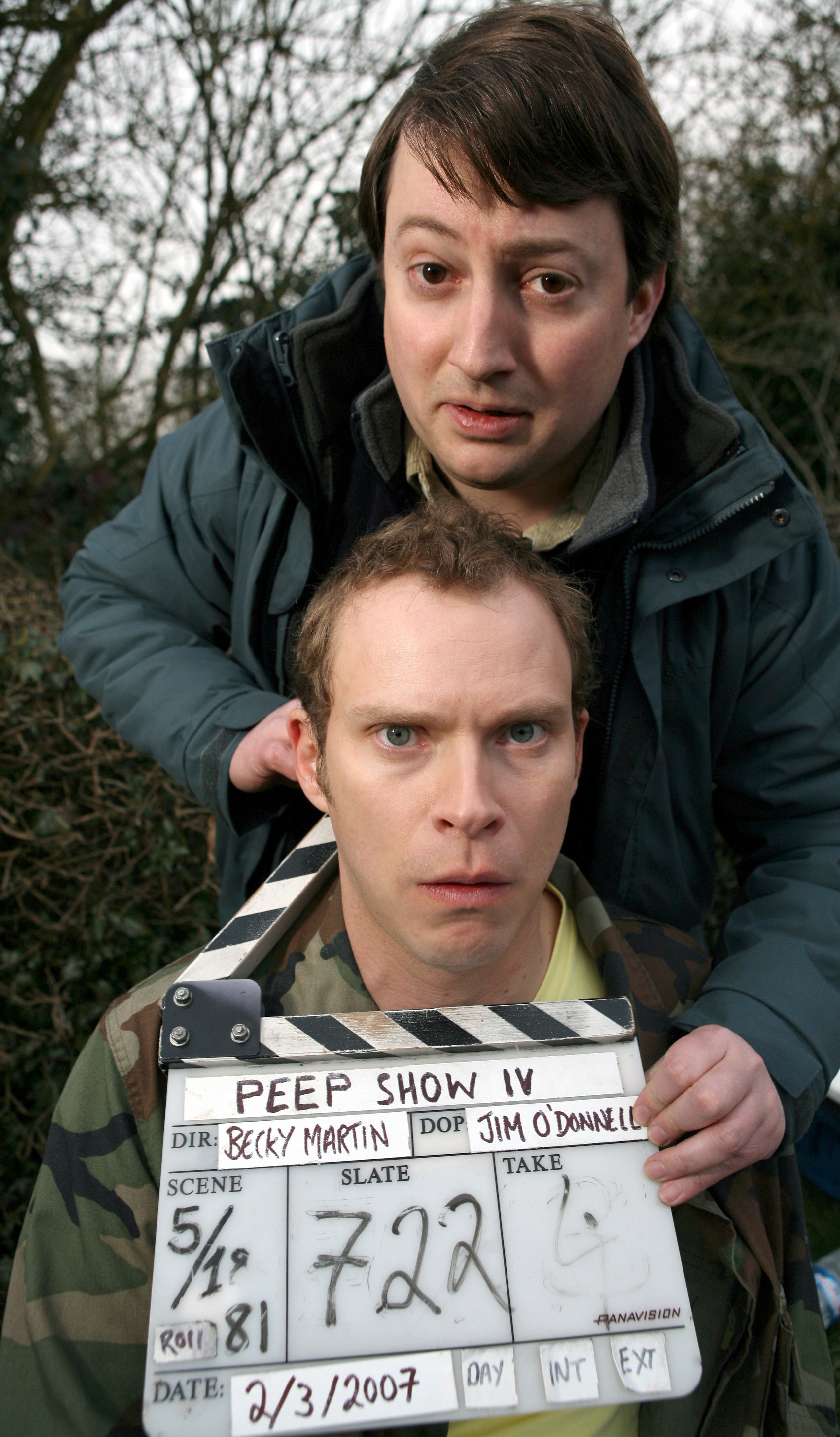
“Everyone has crazy, stupid thoughts,” says Bain, “and when we tapped into that, it felt like we had hit a bit of a gold mine comedy wise.” Mark’s internal monologue would take up pages and pages of the script, as he was so buttoned up. As Mitchell explains, “It’s hard to make someone that repressed as funny as Sam and Jesse make him in Peep Show without hearing those thoughts.” Jeremy’s internal monologue, by contrast, would usually only be a few lines, as he practically had no filter. But this access to inner thoughts, says Webb, “added to the weird honesty of the show and the cringeworthy-ness of it, and made it particularly Channel 4 friendly in its total massive rudeness, because people will just obviously think things that they would never dream of saying out loud.”
Mark and Jeremy’s paralysing postgrad uncertainty seems to appeal the most to people fumbling their way through their twenties. “If you boil it down to a very binary thing,” says Bain, “people that age are figuring out, ‘Am I going to be an office drone like Mark, or a creative butterfly like Jeremy?’” For Howick, it represents “an age where people still don’t know what they want to do, or if they’ll succeed, and it’s quite a terrifying time. Even more so now, because you really don’t have much hope of buying a property. It turns out you don’t have to be on drugs to be insanely paranoid, you just have to be in your twenties.”
Peep Show was supposed to be grim and bleak in a lowkey food-and-wine-corner-shop way
Webb says the line, for him, that best sums up Peep Show is when Jeremy has the offer of a new friend, and he thinks to himself, “I could join society and I wouldn’t be stuck with Mark in our weird puddle.” “That feeling,” Webb says, “that everyone else is part of the mainstream and everybody else knows what to do, and you are just trapped in this s***ty place and you’re not doing anything properly. Everybody feels that, at least some of the time.”
But whatever age you are, if you’re British, you’ll get Peep Show. “There’s just something so amazingly s*** about that flat in Croydon,” says Shepherd. “In American shows, when people are down at heel and unhappy, they still have quite glamorous apartments.” “It’s so British, that nihilism,” says Paterson Joseph, the man behind JLB Credit boss Johnson. For Wright, “what plugs into the British sensibility is the nothing-happens-ness of it”. “I remember Robert and David talking about how they would like to do series 10 when they’re 65 and they’re still in that flat, still going, ‘Well, you know, we could go to the pub, and maybe we’ll meet someone...’ It’s that sort of Beckett world of people who just keep going round and round, making the same mistakes again and again. There’s an assumption that we all live fruitful, exciting, travelling lives with incredible networks of friends and a great love life and enough money and everything’s good. Peep Show is not that, it’s consistently stubbing your toe against life.”
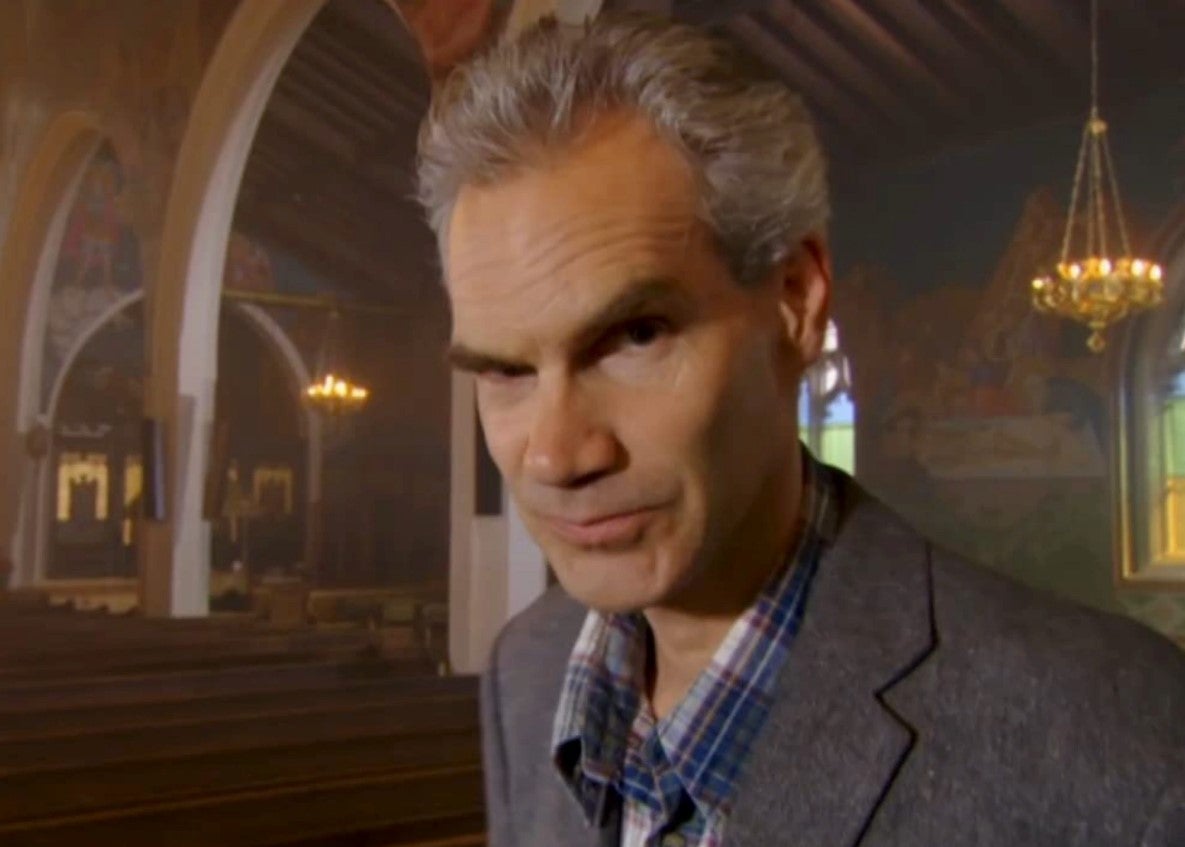
The scuzzier the location, the more Peep Show it was. “After a day’s filming, there would be grit under your fingernails,” says Webb. “You needed to be somewhere a bit dirty for that authentic Peep Show feel. My memories of filming are mostly in a car park with a skip in the corner or just a pile of rubbish somewhere. It was mine and David’s first TV show, so we weren’t moaning that much, but it was pretty shoe-string type stuff.”
Mitchell says the aesthetic of Peep Show is “supposed to be grim and bleak in a lowkey food-and-wine-corner-shop way”. It might have been a little painful for them to watch what Armstrong went on to do with Succession, a show about billionaires. “I thought, that’s quite a change for Jesse,” says Mitchell, laughing. “A few years before, he had to have Peep Show scenes shot in a parked car because we didn’t have the budget to film Mark and Jeremy driving along. And now, purely because it adds to the aesthetic, the Succession cast can have their conversations in helicopters with the Empire State Building behind them. That must have felt quite liberating.” What would it be like if Mark and Jeremy got rich, I wonder. “I would like to see the house that Jeremy would buy given unlimited resources,” says Mitchell. “Although it might be quite a tough watch.”
In an introduction for Succession’s published scripts, executive producer Frank Rich suggested that Mark and Jeremy, who referred to themselves as the “El Dude brothers”, were the embryo of Succession’s “disgusting brothers” Tom and Greg (Matthew Macfadyen and Nicholas Braun). Many a think piece has been written about the links between the two shows. “The obvious comparison is that everyone in the show is largely detestable and you don’t really know whose side to be on,” says Howick. “And what reminded me of Peep Show was Succession’s frivolity. Licking the stepdad’s prized cheese in the fridge, all the stuff that was veering on bad taste.” For Shepherd, it’s the “lack of logic – the amoral, strange, selfish behaviour and panicked decisions”.
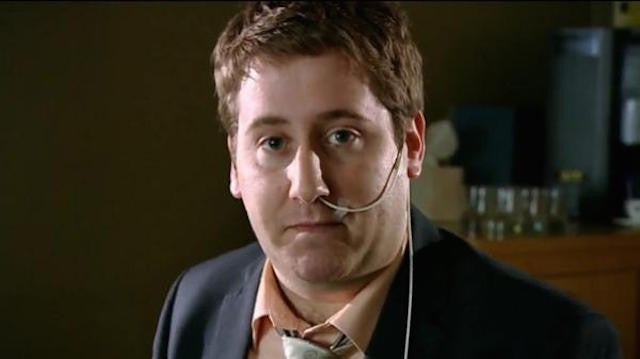
Panicked decisions are at the nucleus of Peep Show’s most deranged, brilliant scenes. In one episode, “Holiday”, Jeremy sets fire to and eats a dog, basically out of social awkwardness. In the adored “Wedding” episode, Jeremy wets himself on the mezzanine of a church, because he’s helping Mark hide from his soon-to-be wife. “This is what you’ve done,” he spits at Mark, his piss leaking through the floorboards to the guests below. “You’ve ground down my sense of self-worth over the years. I hope you’re proud.” They are absurd situations, but it’s the incremental, mundane steps taken to get there that make them feel real. “Peep Show was about everything from getting along with work colleagues or dealing with a crush, at one end of the extreme, to, ‘What are we gonna do with this dead dog?’” says Howick. “But it didn’t matter, because we already knew their vulnerabilities, so we were with them. The absurdity was somehow backed up by the logic of the writing.”
Peep Show was also full of excruciating moments, building on the cringe comedy tradition of series such as The Larry Sanders Show and The Office. Howick’s first day on set sounds almost traumatic. When his character Gerard was introduced on the show, he had a tube up his nose to monitor stomach acid levels. (He also had a mucus build-up in his ears, and when he dies of the flu four seasons later, Jeremy remarks, “That is so Gerard.”) Howick’s first day consisted of sitting in the corner of a strip club “being danced upon for hours”. “It was awkward, really,” he says. “It was my favourite show, and I was quite intimidated by David, and I was just basically in the background being touched. The principal moment for me was the dancer sort of touching my tube, and just a fleeting moment of Mark going, ‘Oh, my God, she’s touching the tube.’”
The most painful scene of the whole series has to be the one that takes place in a stationary cupboard between Mark and Dobby (Isy Suttie). Dobby is Mark’s crush – an “IT misfit” with a big fringe, big hair clips and who brings her own block of cheddar to work. In the stationary cupboard scene, Suttie has to stare into Mitchell’s eyes in a mirror as she rubs her body against his crotch. “It was definitely really awkward for me and David, especially as we didn’t know each other very well,” she says. “I should add that no physical contact took place, thankfully, it was just all completely fake, but it was a bit weird looking into each other’s eyes. We were all quite glad when it was finished.” When I remind Mitchell of the scene, he has a strong reaction. “God yeah! I think I’d blanked that out. I was supposed to be doing proper arousal with my face and that’s not something anyone normal feels comfortable with the wider community seeing.”
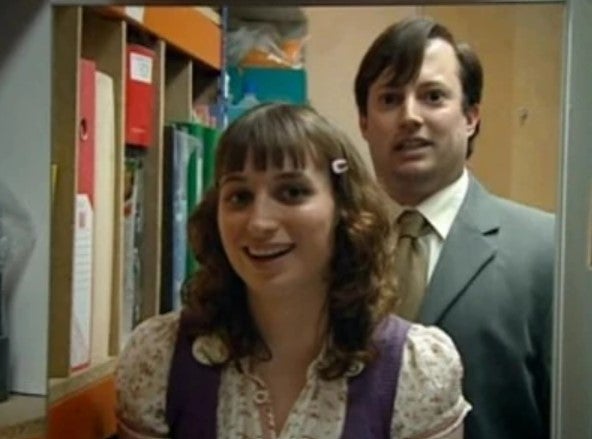
Both Mitchell and Webb bring up a scene where they had to kiss each other, during a game of spin the bottle, as one of the least comfortable to film. But intriguingly, they both claim they found it easier than their co-star. “Kissing David, I guess, wasn’t on my, like, top 10 list of things to do,” says Webb. “At that point, we were spending a hell of a lot of time together for two people who are not in love and are not, sadly, particularly attracted to each other. In a way, it was kind of easy for me because I just had to really go for it as Jeremy would do, and then David just had to kind of sit there and take it, which is what Mark would do.” Mitchell, meanwhile, tells me, “It was easier for me because I was allowed to be mortified by it, I just let the discomfort come out. Whereas Rob’s character, who was also mortified by it, was supposed to be projecting a bohemian looseness.”
All the POV sex scenes, Webb says, would not be filmed with another actor, but instead with cameraman Nick Martin. “So all you’ve got is this pleasant, slightly diffident young man bouncing up and down on top of you,” Webb says. “Nick and I got to know each other well over those years.”
The cast are still endlessly approached by fans – and are sometimes confused by their interactions with them. Take Joseph, who played Johnson, a slick businessman with an unwavering smize, who doesn’t talk so much as purr. Mark is so taken with him when they first meet that he questions his own sexuality. Johnson does Tai chi, wears silk dressing gowns and says things like, “I’ll assign you some slave drones, milk ‘em till they’re dead. We just need them sweating facts and s***ting stats for us until D-Day.” When Joseph first read Johnson’s lines, he couldn’t believe anyone like him actually existed. “Sam and Jesse told me they had a friend who worked in the city who had a boss like Johnson. I never actually got to meet this guy but I’m quite glad I didn’t.” Speaking about meeting fans of the show, he says, “They always want to tell me how much they love Johnson. I used to find it upsetting because he’s so horrible.”
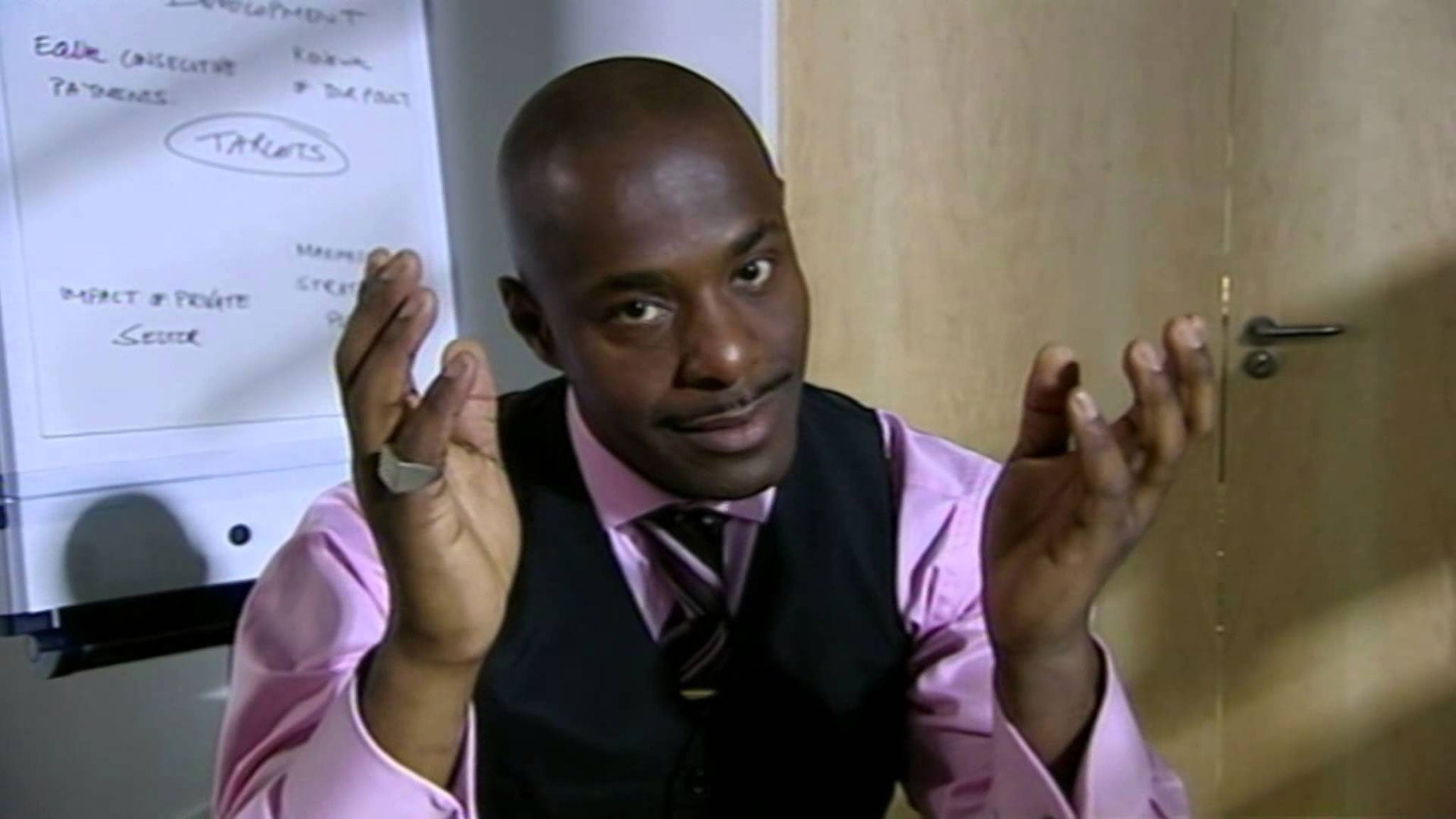
So pathetic was Howick’s character Gerard, that even fans treat the actor with very little respect. But he enjoys it. “With other roles, people say, ‘Excuse me, sorry. Can I just ask, are you Pat from Ghosts?’ With Peep Show fans, it’s just, ‘Gerard! You prick!’”
Wright’s interactions are unusual, too. “In lockdown, so many more people watched it, and coming out of that, people would shout, ‘Herodotus and a bowl of muesli!’ at me [Angus’s preferred weekend activities] or, ‘They made you drink urine!’ [from when Angus was kidnapped by Jeremy and Super Hans]. When I’m with my elderly mother, she’s like, ‘Is that Peep Show?’ And I’m like, ‘Yeah it is, honestly.’”
Shepherd gets fans telling her that April should have ended up with Mark, while Suttie has seen a mixture of reactions to Dobby online. There is one theory that the Fantasy War Quest enthusiast is the only genuinely good character on the show. But there’s also a tougher side to the internet chatter. “Quite early on, I did look at comments and I found a few horrible ones,” she says. “People feel like they’ve got ownership of Mark and Jez and they talk about their girlfriends and stuff, but it’s not really any of my business if people don’t think Dobby is a good match for Mark. And I just thought, I’m gonna stop looking for validation. More than any other acting role that I’ve done, with Peep Show, people really feel this immense sense of ownership.”

It is one of the best-loved sitcoms of the 21st century, but would Peep Show get made today? “If it was commissioned now, there would definitely be more diversity in it,” says Wright. “We weren’t addressing that in 2003.” “My instinct is it would be made today,” says Suttie. “There are some things you rewatch from 10 or 20 years ago and go, ‘Ah, I feel really uncomfortable with that,’ but Peep Show wasn’t punching down. Even, say, Mark’s obsession with history. It wasn’t saying, ‘People who like history are twats.’ It was saying, ‘Mark is being a twat about history.’”
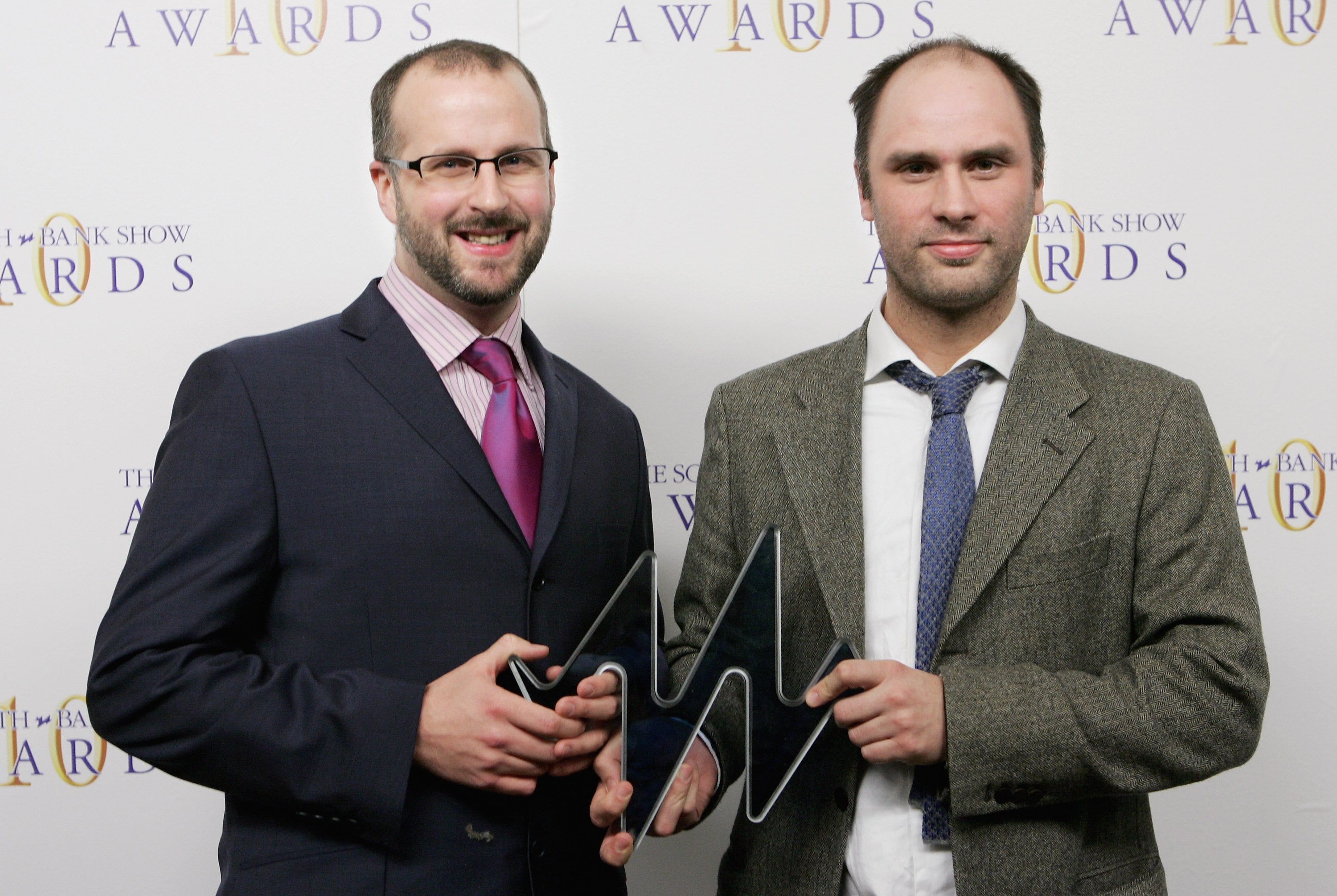
The fifth attempt to remake Peep Show – a gender-flipped version with Minnie Driver and Amandla Jahava as two female leads – is currently underway in the US. One previous effort saw The Big Bang Theory’s Johnny Galecki cast as a Mark-equivalent character in a pilot that wasn’t picked up, and another version that was set to be written by Armstrong and Bain never materialised. The writing duo are currently developing a separate idea of some sort, but not necessarily for Mitchell and Webb, with Armstrong recently revealing that they “have some things cooking”.
But maybe one day, they will return to their original ambition, for Mark and Jeremy to come back for a 10th series of Peep Show in their sixties. Sat on that sagging sofa. Mark trying to watch Hitler’s Henchmen in peace. Jeremy stealing a sausage off Mark’s dinner plate. Only each other for miserable, but perfect, company.
‘Peep Show’ is available to stream on Channel 4 and Netflix



Join our commenting forum
Join thought-provoking conversations, follow other Independent readers and see their replies
Comments